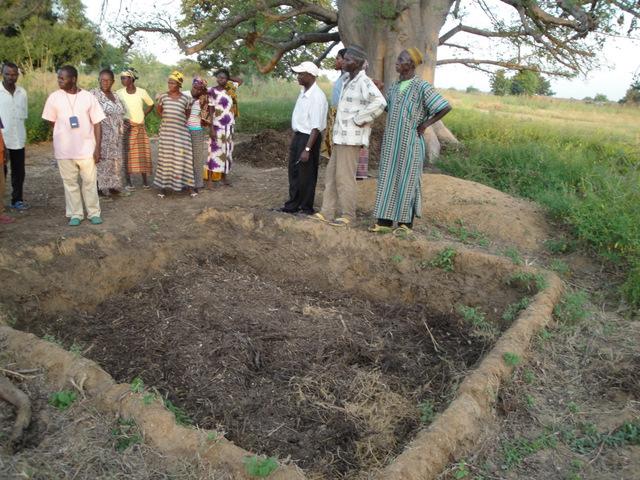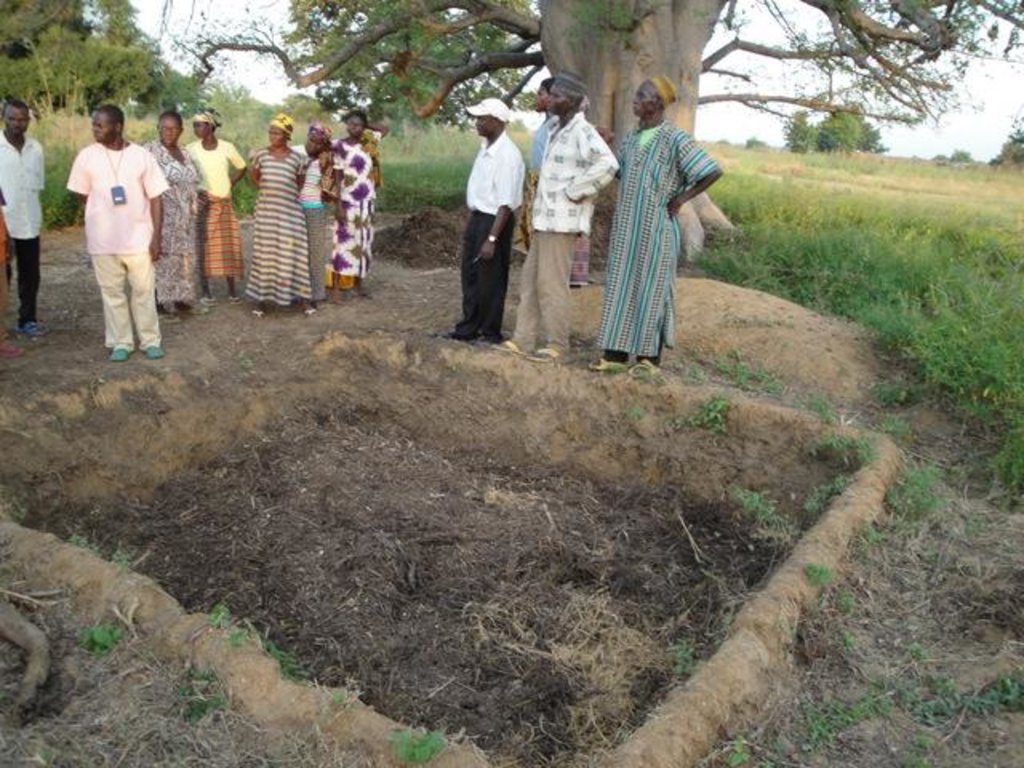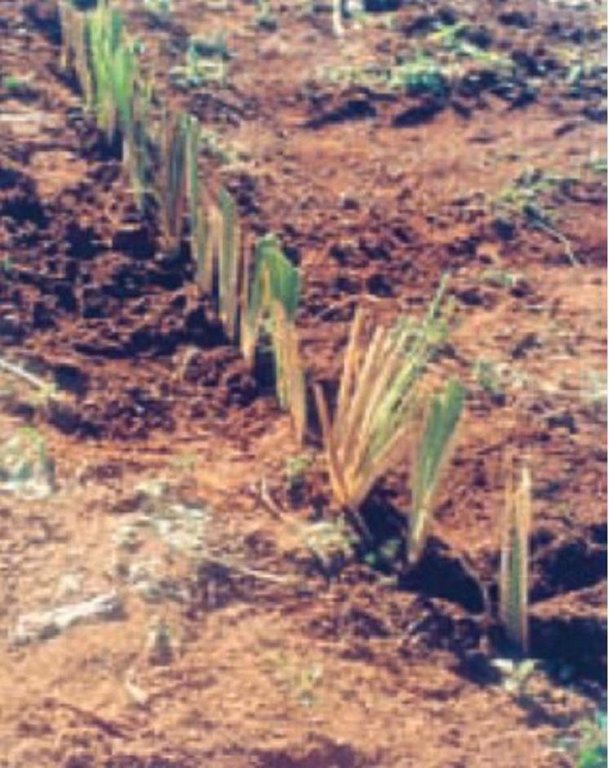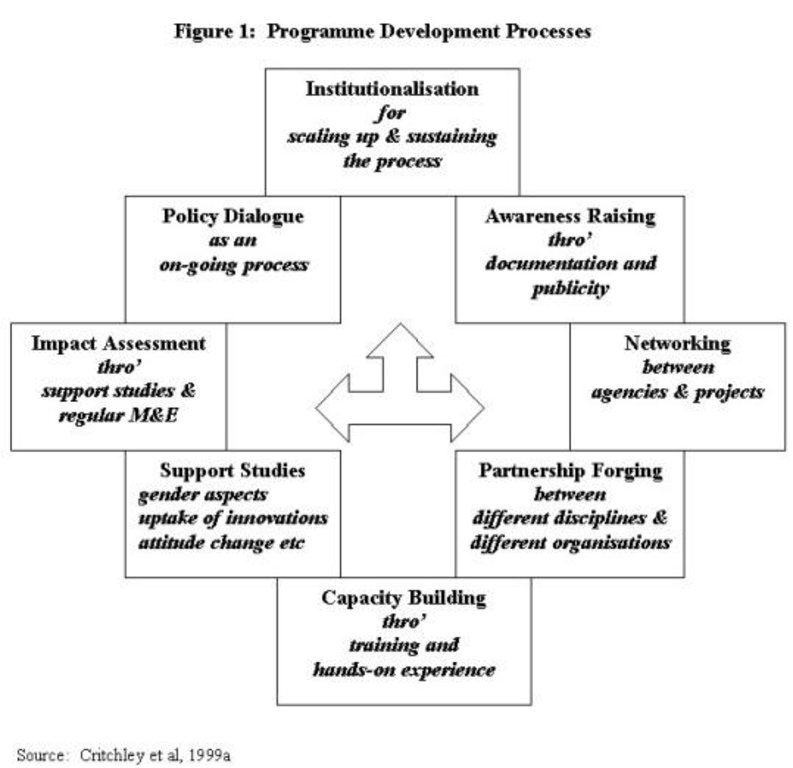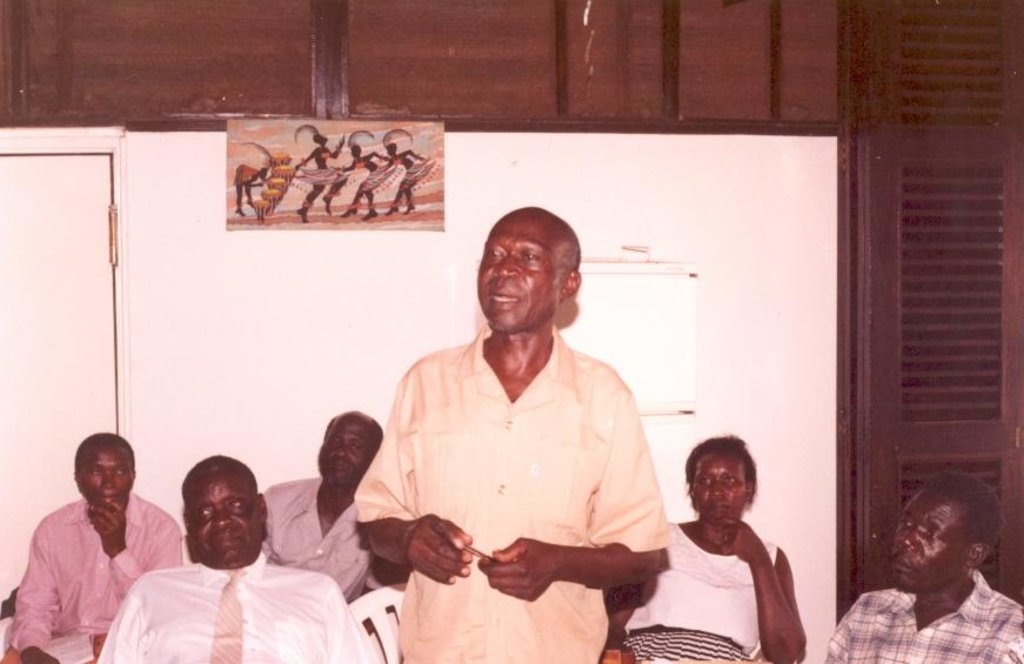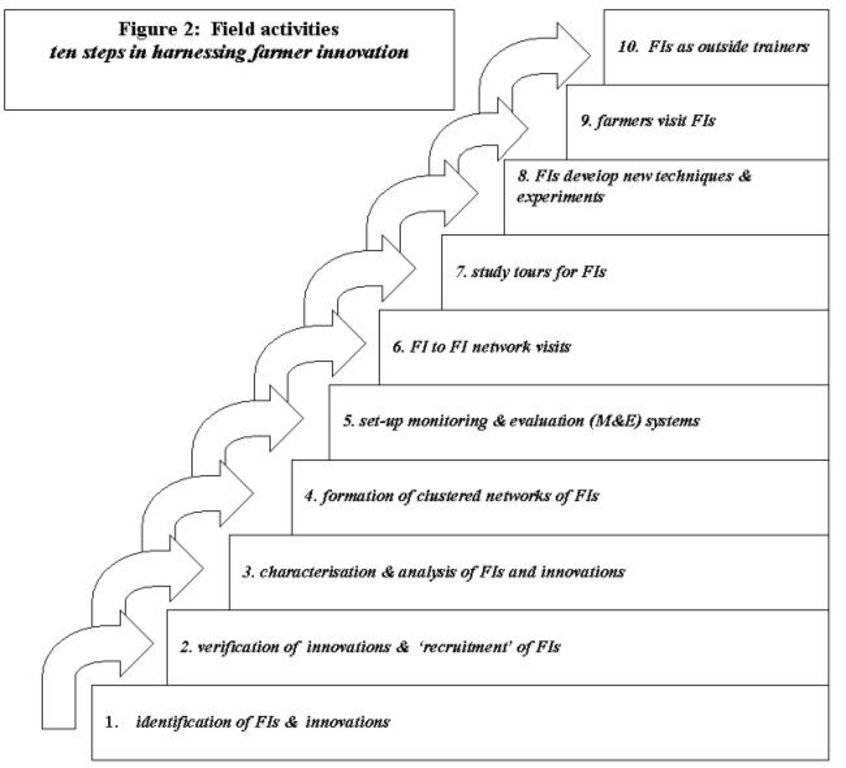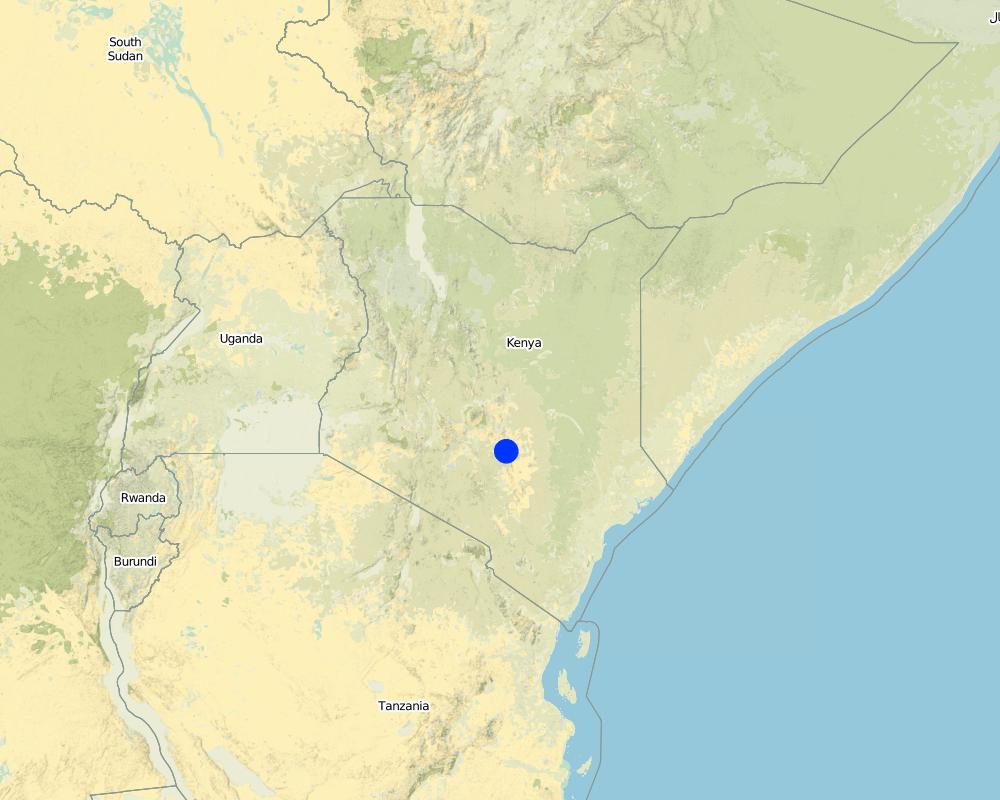Promoting Farmer Innovation [Kenya]
- Creation:
- Update:
- Compiler: William Critchley
- Editor: –
- Reviewer: Fabian Ottiger
approaches_2412 - Kenya
View sections
Expand all Collapse all1. General information
1.2 Contact details of resource persons and institutions involved in the assessment and documentation of the Approach
SLM specialist:
Name of the institution(s) which facilitated the documentation/ evaluation of the Approach (if relevant)
Food and Agriculture Organization of the United Nations (FAO) - Italy1.3 Conditions regarding the use of data documented through WOCAT
The compiler and key resource person(s) accept the conditions regarding the use of data documented through WOCAT:
Ja
2. Description of the SLM Approach
2.1 Short description of the Approach
The PFI approach seeks to build on technical initiatives - innovation in the local context - developed by farmers themselves in dry/marginal areas where the conventional approach of transfer of technology from research to extension agents and then on to farmers has so often failed.
2.2 Detailed description of the Approach
Detailed description of the Approach:
Aims / objectives: The objective of PFI is to stimulate technical innovation, in the field of land management, by farmers. The approach basically comprises indentifying, validating and documenting local innovations/initiatives. Simple monitoring and evaluation systems are set up amongst those innovative farmers who are willing to co-operate. Through contact with researchers, extra value is added to these techniques where possible.
Methods: Farmer innovators are brought together to share Ideas. Finally, best-bet technologies, in other words thos that are considered to be good enough to be sharedd, are disseminated through farmer-to-farmer extension. This takes two forms. First, farmers are brought to visit the innovators in their farms. Secondly, farmer innovators are used as teachers/trainers to visit groups of farmers - including FAO's farmer field schools in some cases. Only in this second form of extension is an allowance payable to the innovator. A ten-step field activity methodology has been developed.
Role of stakeholders: At programme level, there is capacity building of in-line extension and research staff, who are the main outside actors in the programme. In each of the countries the approach has been implemented through a government ministry and with NGOs in the field. The principle, and practice, is not to create seperate project enclaves, but to work through existing personnel, sharing buildings and vehicles that are already operational in the area. A programme development process methodological framework shows how the ultimate goal of institutionalisation can be achieved. PFI's first phase, completed in 2000, was financed by the Government of The Netherlands, through UNDP, and was active in Kenya, Tanzania and Uganda.
2.3 Photos of the Approach
2.5 Country/ region/ locations where the Approach has been applied
Country:
Kenya
Region/ State/ Province:
Mwingi District
Map
×2.6 Dates of initiation and termination of the Approach
Indicate year of initiation:
1996
Year of termination (if Approach is no longer applied):
2000
2.7 Type of Approach
- project/ programme based
2.8 Main aims/ objectives of the Approach
The Approach focused mainly on SLM with other activities (better land husbandry practices (eg animal husbandry/ crop selection))
Improve rural livelihoods through an increase in the rate of diffusion and appropriate SLM/water harvesting technologies, promotion of farmer-farmer exchange, capacity building of farmers and supporting organisations, promotion of policy dialogue
The SLM Approach addressed the following problems: Poor supply of relevant recommendations from research for small-scale farmers in marginal areas, poor delivery of SLM technologies to farmers, lack of motivation of research and extension staff, isolation of promising innovative SLM ideas which address low crop yields, land degradation and poverty, lack of exchange of innovative knowledge.
2.9 Conditions enabling or hindering implementation of the Technology/ Technologies applied under the Approach
institutional setting
- hindering
lack of motivation of research and extension institutions
Treatment through the SLM Approach: bringing them together with farmer innovators
legal framework (land tenure, land and water use rights)
- hindering
The existing land ownership, land use rights / water rights hindered a little the approach implementation access to land for women was a problem that inhibited women to innovate
other
- hindering
spread of knowledge and ideas
Treatment through the SLM Approach: networking of farmers (+extension staff and researchers)
3. Participation and roles of stakeholders involved
3.1 Stakeholders involved in the Approach and their roles
- local land users/ local communities
Existing groups of land users
Men tend to 'volunteer' themselves as innovators and to ignore their wives. This led to (1) gender studies and (2) gender sensitisation workshops to try to overcome the problem(s)
- national government (planners, decision-makers)
International specialists in collaboration with/ after discussions with national specialists and land users
- international organization
3.2 Involvement of local land users/ local communities in the different phases of the Approach
| Involvement of local land users/ local communities | Specify who was involved and describe activities | |
|---|---|---|
| initiation/ motivation | passive | public meetings, interviews/questionnaires, workshops/seminars, rapid/participatory rural appraisal |
| planning | interactive | rapid/participatory rural appraisal, interviews/questionnaires, workshops/seminars, public meetings, |
| implementation | interactive | Mainly: responsibility for minor steps; partly: responsibility for major steps |
| monitoring/ evaluation | interactive | Mainly: public meetings, measurements/observations; partly: workshop/seminars; |
| Research | interactive | Mainly: public meetings, measurements/observations; partly: workshop/seminars; |
3.3 Flow chart (if available)
3.4 Decision-making on the selection of SLM Technology/ Technologies
Specify who decided on the selection of the Technology/ Technologies to be implemented:
- mainly land users, supported by SLM specialists
Explain:
land user driven (bottom-up). farmers developed the technologies; field staff selected them
Decisions on the method of implementing the SLM Technology were made by mainly by land users supported by SLM specialists. land user driven (bottom-up).
4. Technical support, capacity building, and knowledge management
4.1 Capacity building/ training
Was training provided to land users/ other stakeholders?
Ja
Specify who was trained:
- land users
- SWC specialists, extensionists/trainer
Form of training:
- farmer-to-farmer
- public meetings
- courses
Subjects covered:
1. Training in presentation skills for farmer innovators 2. Facilitation of field days where innovators/ extension staff could present jointly (so farmers trained thereby)
4.2 Advisory service
Do land users have access to an advisory service?
Ja
Specify whether advisory service is provided:
- on land users' fields
Describe/ comments:
Name of method used for advisory service: 'Farmer Innovation Approach'; Key elements: Identify Fis, Form networks of FIs groups which meet, Bring farmers to see 'best-bet' innovations; 1) Advisory service was carried out through: government's existing extension system, non-governmental agency 2) Advisory service was carried out through: government's existing extension system, non-governmental agency; Extension staff: mainly government employees
Advisory service is quite adequate to ensure the continuation of land conservation activities
4.3 Institution strengthening (organizational development)
Have institutions been established or strengthened through the Approach?
- yes, moderately
Specify the level(s) at which institutions have been strengthened or established:
- local
Specify type of support:
- capacity building/ training
4.4 Monitoring and evaluation
Is monitoring and evaluation part of the Approach?
Ja
Comments:
bio-physical aspects were regular monitored
technical aspects were regular monitored
socio-cultural aspects were ad hoc monitored
economic / production aspects were regular monitored
area treated aspects were ad hoc monitored
no. of land users involved aspects were ad hoc monitored
There were few changes in the Approach as a result of monitoring and evaluation: e.g. Better integration with government services/ system for technical backstopping and extension
4.5 Research
Was research part of the Approach?
Ja
Specify topics:
- technology
Give further details and indicate who did the research:
research was slow to begin activities in this phase but supposed to be a key pillar in this farmer/ research/ extension linkage
Research was carried out on-farm
5. Financing and external material support
5.1 Annual budget for the SLM component of the Approach
If precise annual budget is not known, indicate range:
- 100,000-1,000,000
Comments (e.g. main sources of funding/ major donors):
Approach costs were met by the following donors: international (Dutch Government): 60.0%; government (national): 20.0%; local community / land user(s) (-): 20.0%
5.3 Subsidies for specific inputs (including labour)
- agricultural
| Specify which inputs were subsidised | To which extent | Specify subsidies |
|---|---|---|
| seeds | partly financed | |
If labour by land users was a substantial input, was it:
- voluntary
5.4 Credit
Was credit provided under the Approach for SLM activities?
Nee
6. Impact analysis and concluding statements
6.1 Impacts of the Approach
Did the Approach help land users to implement and maintain SLM Technologies?
- No
- Yes, little
- Yes, moderately
- Yes, greatly
Innovative land husbandry technologies of other farmers
Did the Approach improve issues of land tenure/ user rights that hindered implementation of SLM Technologies?
- No
- Yes, little
- Yes, moderately
- Yes, greatly
Gender sensitisation training may have helped The problem is unlikely to be overcome in the near future.
Did other land users / projects adopt the Approach?
- No
- Yes, little
- Yes, moderately
- Yes, greatly
1. GTZ in Kenya are adopting the PFI approach widely; 2. FAO's farmer field schools are joining hands with PFI in Kenya 3. INADES Tanzania adopted the approach 4. Several organisations in Uganda have expressed an interest
- No
- Yes, little
- Yes, moderately
- Yes, greatly
- No
- Yes, little
- Yes, moderately
- Yes, greatly
6.3 Sustainability of Approach activities
Can the land users sustain what has been implemented through the Approach (without external support)?
- uncertain
If no or uncertain, specify and comment:
There may be some groups of farmers who will continue to meet and exchange ideas but this approach basically depends on a continuation (long term) of the farmer/ extension/ research interaction
6.4 Strengths/ advantages of the Approach
| Strengths/ advantages/ opportunities in the land user’s view |
|---|
| Gives them confidence |
| Offers them new and viable ideas from their peers |
| Strengths/ advantages/ opportunities in the compiler’s or other key resource person’s view |
|---|
| Builds on local ideas (How to sustain/ enhance this strength: institutionalise the approach!) |
| Revitalises the extension service |
| Is attractive at all levels |
6.5 Weaknesses/ disadvantages of the Approach and ways of overcoming them
| Weaknesses/ disadvantages/ risks in the land user’s view | How can they be overcome? |
|---|---|
| Research reluctant to respond to farmers' agenda | effort to convince researchers of benefits of joint research with farmers. |
| Weaknesses/ disadvantages/ risks in the compiler’s or other key resource person’s view | How can they be overcome? |
|---|---|
| Depends on individual flexibility and commitment, does not follow the conventional institutional chain of command | training in skills and methodologies. |
| Sometimes confers too much prestige on a particular group of favoured farmers | rotate farmers who are the focus of attention. |
7. References and links
7.1 Methods/ sources of information
- field visits, field surveys
- interviews with land users
7.2 References to available publications
Title, author, year, ISBN:
Promoting Farmer Innovation (1999) Critchley et alVideo (same name)
Available from where? Costs?
RELMA, Nairobiditto
Links and modules
Expand all Collapse allLinks
No links
Modules
No modules


